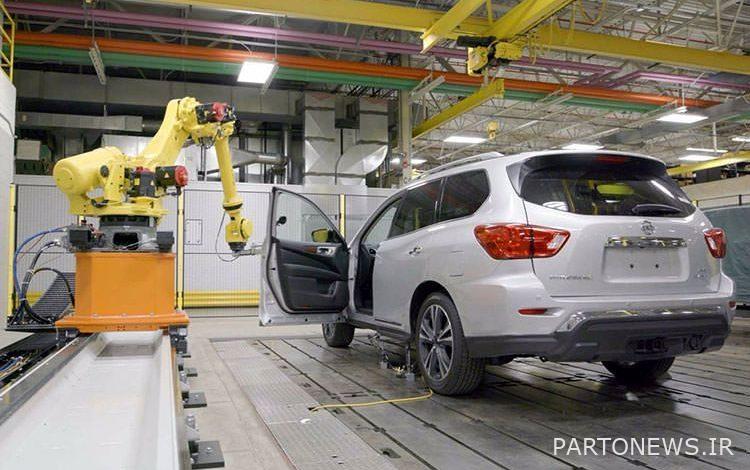Car production by small robots in Nissan

“So far, manpower and through the experience he has gained, the adjustments have been made on the line,” said Heidi Yuki Sakamoto, Nissan’s executive vice president, during a visit to the plant on the Aria long-wheelbase production line. Production used to take place, but now robots use artificial intelligence to collect data and make adjustments by analyzing it. “Technologies have advanced so far.”
The Tochigi plant on the outskirts of Tokyo has been operating since early April this year, and its production lines have been built in such a way that it is possible to produce three different types of vehicles: gasoline, electric and hybrid vehicles. In the e-Power type, dual gasoline-electric engines are used and all come out of one line. Each car receives one of the three modes of gasoline, electric or gasoline-electric based on the body number and according to the customer’s order and leaves the line.
Instead of manual labor, he now does more skillful work and makes appropriate decisions based on data analysis. Robots are still being maintained by human resources.
All automakers are researching, developing, and advancing robotic technologies that can increase adaptability and competitiveness, and accelerate responses. On the arm of these mechanical robots, a variety of sensors and cameras are installed so that information is collected from all angles and not the slightest defect is left out of sight.
Nissan is researching technologies and techniques that will replace magnets and magnets in electric vehicles, and this innovation could reduce the need for rare materials and the extraction of elements from mines, and reduce production costs. Nissan says the new technology is being tested at the Tochigi plant and is gradually being extended to other global Nissan plants, including Renault, Nissan’s business partner in France.
Sakamoto says calculating the cost reduction of a fully automatic production line is not easy, but given the global outbreak of the virus and the severe shortage of manpower and stringent standards for carbon emissions to reduce the global warming crisis, automating production lines and equipping robots is an urgent need for factories. Nissan says that from 2050 onwards, it will balance carbon production and consumption in all operations and life cycle of its products, which is called “carbon neutralization”.
Carbon neutralization involves the extraction, production, exploitation and recycling of raw materials. The new method of painting the body of cars in Nissan and its fenders is of a type that paints and heats at the same time. [پخت رنگ] It is done together and reduces energy consumption by 25%.
Prior to this new technology, car bodies, which were made of aluminum in the body and plastic in the fenders, had to be painted separately at different temperatures. Nissan expects to return to profitability in the current fiscal year ending in March 2022. But the point is, Nissan is also short of chips [پردازشگرهای نیمه هادی] The brand has not been spared and the brand name has not yet improved due to the scandal of its former chairman Carlos Gonzalez. Qasn was arrested in 2018 for misconduct in Japan.
.

